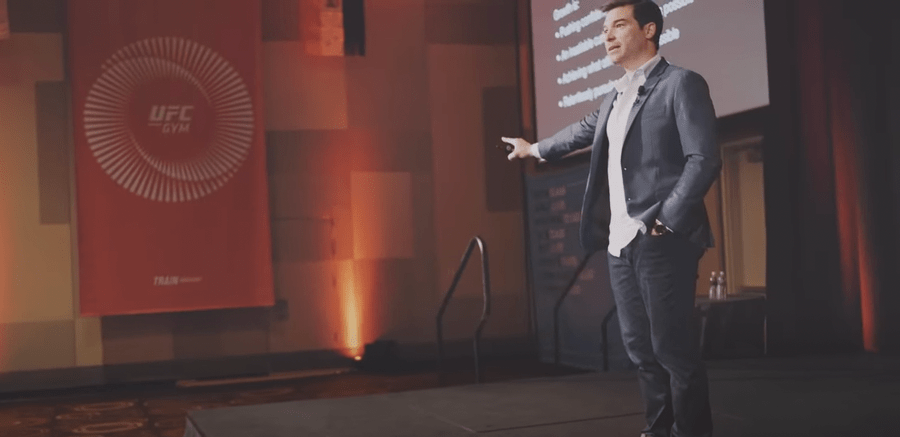5 Sales Lead Generation Strategies to Siphon Leads Into Your Pipeline
Think that you can drift through the sales lead generation process without having any effective lead gen strategies?
Not so fast.
I’ve said it many times before and I’ll say it again: Business success depends on sales success, and sales success depends on siphoning leads into your sales pipeline.
If you can’t siphon leads into your pipeline, then you can’t make sales and your business is virtually nonexistent.
Therefore, if you’re currently drifting through lead gen without effective strategies to keep you afloat, you’re setting yourself up for major sales and business challenges.
To help create an immediate positive impact on business success, I’m sharing 5 effective sales strategies that are straightforward enough to start implementing today!
Not only are these 5 strategies effective, but they also:
- Are time and energy saving;
- Effectively generate new leads and retain existing customers; and
- Help close more deals in less time and with less resistance.
Sales success depends on lead gen success. Here’s how to amp up lead gen with the most effective strategies!
What Are Lead Generation Strategies?
Lead generation strategies outline an overall plan of action to generate leads.
There are two primary lead gen strategies, including:
- Inbound strategies - Email marketing campaigns, search engine optimization (SEO), social media marketing, referrals, etc.
- Outbound outreach strategies - Cold calling, cold emailing, LinkedIn outreach
Most sales teams use both inbound and outbound strategies, with about 90% of new leads entering the sales pipeline through outbound strategies with the other 10% coming in through inbound strategies.
However, that isn’t to say that inbound strategies aren’t worth your time. Rather, it is to say that the two strategies just play different roles when it comes to generating leads.
When mixed together, both inbound and outbound strategies can combine to create the best lead gen results ever.
Inbound Vs Outbound Strategies
First off, inbound sales strategies are those that get leads knocking on your door instead of you seeking them out first.
For example, if you optimize content on your website, you can increase organic search traffic to your website. Once website visitors see that you have content relevant to their pain point, then they’re likely to reach out to you.
Because inbound strategies are so intertwined with marketing, they’re often referred to as marketing strategies.
Despite the fact that inbound sales strategies don’t tend to generate as many leads as outbound strategies, that doesn’t mean that they’re not worth their time, because they:
- Increase brand awareness
- Add value to your lead’s buyer’s journey
- Increase your perceived level of expertise
Think of inbound strategies as those that are quietly working below the surface to siphon new leads into the pipeline while ensuring that they don’t suddenly fall out of the pipeline during the selling process.
Second, outbound sales strategies are those in which you go out and pursue leads yourself. These can be people who you know very well or have never even met before.
The vast majority of leads tend to come through outbound channels, with cold calls, emails, and messages generating the most leads.
Outbound strategies tend to generate more leads because most leads don’t understand their business problems in the first place. If they did, then they would have already fixed them!
Because leads don’t understand their problems, it’s up to salespeople to reach out to them, make them aware of their problems, and then propose solutions.
Bottom line: Make the most out of sales lead generation with the help of both inbound and outbound strategies.

Why Most Lead Generation Strategies Don’t Work
To put it simply, most lead gen strategies don’t do sales reps any good.
HOWEVER, that isn’t to say that the strategies in themselves aren’t effective. Rather, it means that sales teams aren’t using them correctly or are undoing their effects by making errors that counteract the impact of the strategy.
That said, here are the most common ways that sales professionals botch their lead gen strategies and resultantly don’t achieve positive sales results.
Targeting the Wrong Target Audience
Not every lead is a high-quality lead.
Unless the lead that you’re targeting is high-quality, meaning that they fit your ideal customer profile and ideal buyer persona, then the potency of your lead gen strategies will come close to zero.
Targeting unqualified leads is like trying to sell water to a fish... They’re totally unlikely to buy from you in the first place, so your strategies won’t do any help.
If the lead isn’t qualified, then don’t waste your time on them!
They’re Non-Assertive
For your sales strategies to be potent, you need to be assertive in your sales approach.
Contrary to popular belief, being assertive is not the same as being aggressive, overbearing, or controlling. Rather, it simply means to firmly stand your ground.
Believe it or not, but unless you are assertive, prospects won’t take you seriously. You can have the best strategies in the world, but if you aren’t assertive, then they’ll see you as more of a vendor and less of an expert.
Putting Control In Prospective Customer’s Hands
The moment control of the sale falls into the hands of leads is the moment that you lose the sale.
As I said above, leads don’t understand their pain points, because if they did, then they would have already done something about them. Therefore, if power falls into their hands, then the sale is a bust because they don’t know what to do with that power.
Unfortunately, many salespeople don’t use their strategies to take control of the sale. Instead, they use them to serve up power on a silver platter to the potential customer.
Rather than using your strategies to surrender power, use them to take it back.
They Don’t Hook the Qualified Lead’s Attention
Would you throw a fishing line out into the sea without a hook on the end and still expect to catch something?
If not, then you also wouldn’t try to capture new leads without hooking them first. By hooking the lead, I mean capturing their attention.
Putting solid sales strategies to work without having the lead’s attention is pointless! Why even use the strategies if nobody is going to see them?
Low Follow-Up Rates
Lastly, if you aren’t consistent with your strategies, then you might as well not do them at all.
While your primary mission is to generate leads, your leads have their own missions which probably have nothing to do with answering sales calls and emails.
That said, you must consistently reach out to them because the hard truth is that you aren’t their top priority. When you’re not their priority, then they might not want to pay attention to you right off the bat.
Furthermore, unless you consistently reach out to them, leads are unlikely to ever pursue you.
-Mar-09-2022-08-26-39-43-PM.jpg?width=900&name=1%20(1)-Mar-09-2022-08-26-39-43-PM.jpg)
5 Lead Generation Strategies for Generating Leads With Less Resistance
There are potential new customers out there who need their pain points solved with your solution! Unless you pursue them, then they won’t get their problems solved, and you won’t close the deals you need with the B2B companies you want!
Moreover, if you don’t take swift action to siphon leads into your pipeline, then any hopes of lead gen, sales, and business success are basically dead.
Set yourself up to take swift action by making use of these 5 sales lead generation strategies. They’re the simple sales tools that make the greatest impact on lead gen, sales, and overall business success!
1. Sending a 1-Minute Cold Video
Want to know how to instantly take your sales calls, emails, and messages from 0 to 100? It’s simple with my 1-minute cold video strategy.
Here’s how to do it: If a prospect doesn’t answer your initial cold call email or message, immediately take out your phone to record a 1-minute video of yourself talking directly into the camera. In that video, set your hook for prospects to grab onto. Then, immediately email, message, or even text message it to the prospect.
Before you know it, the lead will be sliding right back into your inbox.
This is the strategy that’ll take you from cold outreach zero to hero!
It’s Hard to Ignore Your Face
What makes the 1-minute cold video strategy so effective at generating responses from leads?
To put it simply, it’s hard for prospects to ignore you when they have to ignore you to your face. Even if it’s just a video of your face, they’ll have a hard time ignoring it!
This is unlike regular phone calls, emails, and messages, in which the prospect has no problem ignoring you because they don’t have to face up to you when doing it.
Hype-Up Their Sense of Urgency
Let’s say that you have a lot on your plate so you’ve also been ignoring several texts from a friend over the past few days. Suddenly out of nowhere, you get an incoming FaceTime call from that friend... Now, it’s virtually impossible for you to ignore them any longer because that internal sense of urgency starts firing up inside of you!
Sound familiar?
When you show prospects your face over video, you’re igniting those same flames of urgency inside of them. With urgency blazing, it’s all the more difficult for them to ignore you any longer.
2. Referrals, Referrals, Referrals
Of all the inbound sales strategies, there is one that doesn’t get the hype that it deserves: referrals from current customers for new leads.
If you’re not already asking for referrals, then you’re sitting on a gold mine without digging!
What makes referrals so awesome?
For starters, why go through the entire lead gen process to generate leads when you can just ask your current customers for leads? It’ll save you tons of time, energy, and resources.
Also, referrals from current customers are usually already somewhat qualified, as the current customer who thought of them in the first place already thinks that they could be a good fit for you.
Getting a better bang for your sales buck starts with asking for referrals!
Foster Existing Customer Relationships
If you want to reap the benefits of referrals, then you need to build relationships with your current customers, because when you have strong relationships with customers, then they’ll happily hand over referrals.
When it comes to sales (and just about any other aspect of life), there is no such thing as something for nothing. So if you want to receive referrals, then you need to give something to customers first.
If there’s anything that you should give customers on top of a solution to their pain point, it should be a reliable, trusting relationship!
Set-Up 10 Minute Phone Calls to Connect With Current Customers
To gather referrals from current customers, set up what I like to call 10-minute customer success calls.
During those calls, GIVE customers the attention they want by asking them in-depth questions about their pain points and business vision.
For example, questions such as, “Is there something else I can do to make solving this problem easier?” or “How has your vision changed since we first met?”
After asking questions, end the call by asking for a referral. Say something like, “Thank you so much for the information, is there anybody else you know who I could reach out to and help?”
By the end of the call, customers will feel more confident in their relationship with you and you’ll GET the referral you want!
3. Value-Based Content Marketing
When it comes to inbound marketing content, many marketing teams throw a bunch of trash out into the universe hoping that it’ll do them good.
By that, I mean that B2B marketers approach marketing with a quantity over quality perspective. Rather than producing high-quality content, they simply generate as much of it as possible.
Ultimately to their surprise, this gets them absolutely NOWHERE.
Why?
Because it’s absurd to expect leads to consume your content if it doesn’t offer them any immediate value. And unfortunately, if your focus is on the quantity of content you put out versus the quality of it, then the odds that your content adds value are slim.
If you want your marketing campaigns to strike a chord with leads, then each piece of marketing must create value for them!
How Can You Add Immediate Value?
Perhaps you’re thinking, “How can I add value to my customers through marketing content before I even get the chance to work with them?”
You don’t need to do something crazy to create value. It’s like they say: The small things can add the most value to your life!
Instead, think about ways that you can add value to a prospect’s business while guiding them towards your product or service.
For example, you can post webinars on your website in which you talk about your lead’s pain points. That way, the lead will find valuable information through your content while getting curious about how you can help them with that particular pain point.
Again, just think of small ways you can make the potential customer’s life better!
Stop Automating to the Heavens
Don’t get me wrong, I love marketing automation and automation in general. Any opportunity to save time, energy, and resources is always good.
However, many marketers automate their content to the heavens! By that, I mean that they automate their marketing strategy so much that it comes across as robotic.
For example, have you ever subscribed to an email campaign but then all you received was a bunch of automated junk mail? Yeah, it’s annoying, to say the least.
If you don’t like being hit with automated marketing crud all the time, then don’t bombard your leads with the same annoying stuff.

4. Personalizing Social Media Content
Believe it or not, your personal social networking accounts, particularly LinkedIn, are fantastic inbound marketing lead generation tools.
The reason they’re powerful is because they work as an ideal vehicle for exhibiting social proof.
Social proof is a sales psychology tactic in which you showcase to potential customers proof that your existing customers are reaping the benefits of your product or service. Typically, social proof is exhibited through case studies.
Thanks to social proof, potential customers build greater trust in you and even start to feel a little bit of FOMO.
Share Existing Customer Content
Don’t have any case studies to share on your personal LinkedIn page? No problem! There’s an even BETTER strategy you can use to exhibit social proof.
When one of your current customers posts something on LinkedIn about how well their company is doing, share that content on your own page and write a caption about how happy you are to see them thriving and how thankful you are to help them on their business journey.
With this strategy, potential customers will see you as somebody capable of helping their customers get to a better place and that you genuinely care about the client’s success.
Eventually, your leads will take the post as a sign that it’s time to reach out to you for help!
5. Follow-Up Quickly and Consistently
If there was ever a secret to lead gen success, it would be this: FOLLOW-UP, FOLLOW-UP, FOLLOW-UP!
If you make one initial cold call, email, or message only to never follow up, then you might as well never have reached out in the first place.
As I said above, unlike you whose primary job is to generate leads, YOU are not your lead’s top priority. Since you’re not their top priority, why would you expect them to respond to you immediately?
There’s no way to beat around the bush. If you want lead gen success, then follow-up is a must-do strategy.
Follow-Up Within 24 Hours
After making your initial cold outreach attempt and not getting a response within 24 hours, immediately make another outreach attempt.
Then, if you hear back within 12 hours, immediately try again. From then on, continue to send follow-up messages every 12 hours.
If you think that you’re being annoying by sending so many messages, just remember that all you’re trying to do is help them solve their pain point and there’s nothing annoying about that.
Follow-Up Until You Get a Response
Continue to follow up every 12 hours and keep going until you get a response.
Like I said before, there is no shame in being consistent, because at the end of the day, you’re trying to help the prospect solve a business problem!
If you put yourself in the customer’s shoes, wouldn’t you appreciate a sales professional being so consistent to get your attention for the purpose of serving you? Of course you would.
Final Thoughts on Effective B2B Lead Generation Strategies
Lead generation is both the most important and most headache-inducing phase of the entire selling process. The solution: these 5 simple yet effective lead generation strategies.
Although lead gen comes with its fair share of challenges, that doesn’t mean that it’s hard or difficult. If it feels that way, then it’s probably because you’re using ineffective lead gen strategies.
Bottom line: If you want to set yourself up for sales and overall business success, particularly sales and business growth, then start with swapping out your current lead gen strategies for these 5 straightforward yet effective strategies!
You May Also Like
These Related Articles

5 Steps to Hook Leads For Sales Lead Generation

Why Your B2B Sales Lead Generation ROI Is So Low




